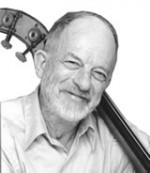Allegro
July/August ’14
Volume 114, No. 7July, 2014
When I first moved to New York in 1950, Local 802 was located on Sixth Ave. in the West 50s. We had two floors of a building: one for offices and one for the “exchange floor,” which was a large open space with a stage on one side where a man sat at a microphone, announcing the names of musicians who were wanted by contractors. Hundreds of musicians showed up at the exchange floor every Monday, Wednesday and Friday afternoon, hoping to connect to some work.
On my first visit to the exchange floor, I was amazed to find a whole corner of the room filled with jazz musicians. I recognized Allen Eager, Stan Getz, Zoot Sims, Morey Feld and some others, and was introduced to pianists Harvey Leonard and Harry Biss, bassists Phil Leshin and Louis Barrero, and vibes player Teddy Cohen. (Teddy later used his middle name, Charles, for professional purposes.) After a couple of hours at the exchange floor, many of the musicians would wander over to Charlie’s Tavern in the old Roseland building, to continue their “networking.”
After a few visits to the exchange floor, I began to realize that not many people were hiring the guys I was standing among. The real action was on the other side of the room, where men with datebooks were handing out club date bookings. The announcer on stage called names I had never heard before: Hy Mandel, Schnabel Weintraub, Boris Malina, Ray Cohen, Joe Boppo and so on. I eventually made some contacts on that side of the room, and did a lot of work for men like Irving Grauer and Jimmy Lanin.
As the Midtown real estate underwent some major shifts, Local 802 was pushed out of the building we were in and needed to find another location with enough space for an exchange floor. Roseland Ballroom had just vacated its building between 7th Ave. and Broadway, which was being demolished, and had moved to the space we all know on 52nd Street near 8th Ave. There had been a skating rink there called The Gay Blades. Roseland converted the rink to a ballroom and rented its upstairs office space to Local 802, arranging for us to use the ballroom as an exchange floor three afternoons a week. The polished wood floor was covered with canvas to protect it from the musicians’ shoe leather.
By the time Local 802 moved to its next location on 42nd Street in the old McGraw-Hill building, the need for an exchange floor had diminished considerably. Answering machines had become a standard part of the telephone system, and contractors preferred to work their phones from home. The last dozen or so musicians to regularly visit the exchange floor were just meeting there before going to lunch.
When Local 802 finally moved into its own building, the era of the exchange floor had come to an end. The ground floor is used for rehearsals and meetings.
Glenn Zottola was seventeen years old when he was with Buddy De Franco, who was then leading the Glenn Miller Band. He told me, “We were playing ‘French Lick.’ This lady came up to Buddy and said “I paid to see Glenn Miller. Where is he?” Buddy said politely, “He died, ma’am.” She said “When?” and Buddy said, “Forty years ago!”
Trombonist Joe Lane told me about an out-of-town gig he once played where he failed to pack a tuxedo shirt in his suit bag. None of the other musicians had an extra shirt, but one of them had a black sharpie pen. He attached Joe’s black bow tie to his white T-shirt and painted black studs down the front of it. Joe says that, in spite of his having to stand for solos several times, the bandleader never noticed his outfit.
Wayne Goodman told me what happened at a recent matinee of the new musical “After Midnight.” Before the show, house contractor and tenorman Andy Farber was hoping that the reed he had used on the previous night’s show would still be in working order. The old reed was still on the mouthpiece when he began to warm it up, but it played so badly that Andy tore it off and, with murmured expletives, slammed it onto the table, shattering it. Wayne says he realized he had witnessed an acute case of Reed Rage.
Jimmie Young told a story on Facebook about playing with the four-trombone band that Kai Winding put together in 1956. One day Kai asked Bill Watrous to try his horn to see how he liked it. Bill took Kai’s horn, released the slide lock, and the slide went flying across the room. Bill’s own horn had such a sticky slide that you could release the lock and the slide would stay right where it was. He’d gotten used to it, and was surprised at how loose the slide was on Kai’s horn.
When Bill Wurtzel was staying at a hotel on the Greek island of Skiathos, a band of gypsy musicians in costume was playing there. The hotel owner, having seen Bill carry a guitar case to his room, begged him to sit in. Though it wasn’t Bill’s style of music, he obliged. When he got on the stand with his guitar, the gypsies immediately segued into the intro to “Take the A Train,” and they played jazz for the rest of the night.

